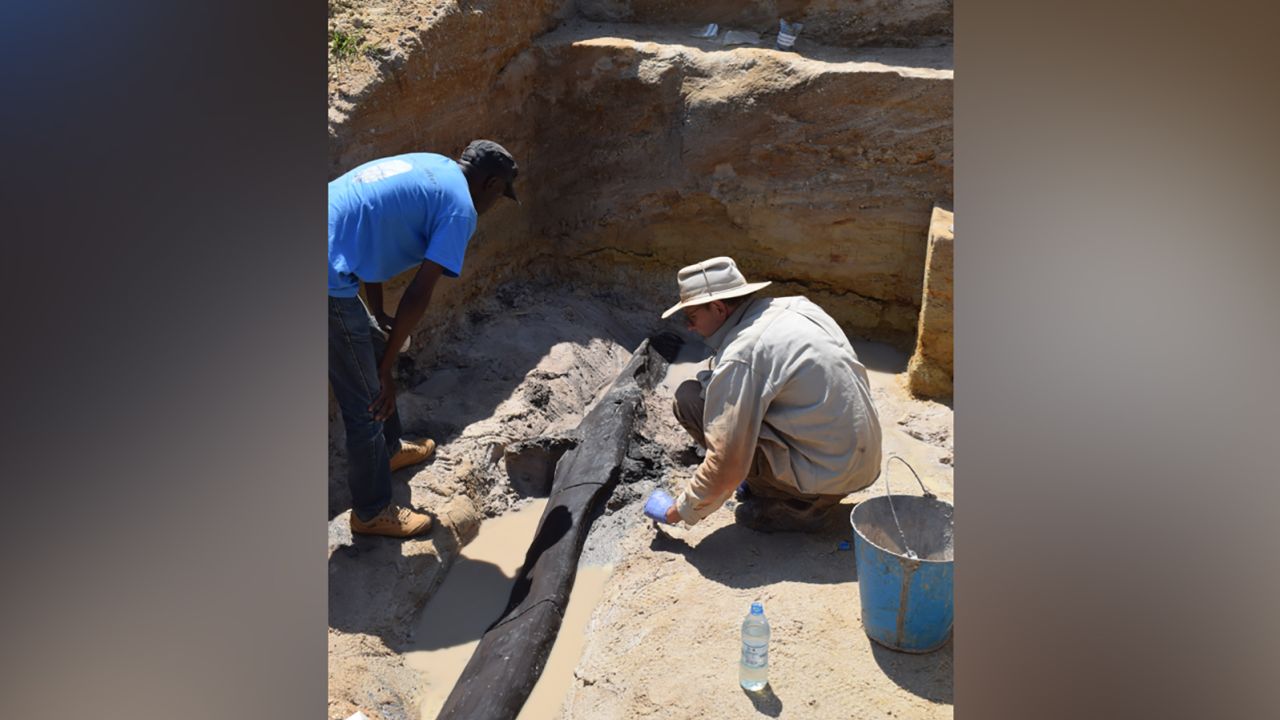Environmentally Manipulative Skills Predating Homo Sapiens
"Waterlogged deposits ... preserved two interlocking logs joined transversely by an intentionally cut notch.""This construction has no known parallels in the African or European Palaeolithic.""We also recovered four wood tools ... including a wedge, digging stick, cut log and notched branch. The finds show an unexpected early diversity of forms and the capacity to shape tree trunks into large combined structures.""These new data not only extend the age range of woodworking in Africa but expand our understanding of the technical cognition of early hominins, forcing re-examination of the use of trees in the history of technology."Professor Larry Barham, Department of Archaeology, Classics and Egyptology, University of Liverpool"That the wood has remained in place and intact for half a million years is extraordinary. And it gives us this real insight, this window into this time period.""It’s completely changed my view of what people were capable of at that time."Geoff Duller, professor of geography and Earth sciences, University of Aberystwyth, United Kingdom
 |
| The excavation team uncovers the wooden structure along the bank of Zambia's Kalambo River. Professor Larry Barham/University of Liverpool |
Archaeologists at work in Zambia discovered the remains of a wood structure, believed to represent the oldest wooden structure in the world dated to about 476,000 years ago. Which places these newly-discovered, human-worked and shaped logs to a position close to a hundred times more ancient than the construction of Egypt's pyramids. The remains were discovered, surprisingly intact, despite their venerable lineage, at Kalambo Falls in the central African nation of Zambia.
It is a region considered to be an archaeological treasure geology by scientists, where evidence of human habitation can be detected back in the early Stone Age period, forward to the modern era. Professor Barham describesd how his team discovered preserved wooden remains they were able to date to almost half a million years ago, published in a paper in the journal Nature.
The area's high water table aided in the preservation of organic matter that would otherwise rot in a short period of time through exposure to the elements, and decompose, buried deep underground. The team meticulously worked to recover a 1.4-metre piece of wood notched in a manner that would do justice to present-day log cabin construction methodology.
Modern humans are thought by archaeological science to have appeared some 350,000 years ago in the evolutionary timeline. Yet these newly-discovered structures serve to predate even the appearance of Homo sapiens, by thousands of years. At least one piece of wood indicated evidence of having been shaped with a broad, cleaver-like edge. "We interpret this object as a portion of tree trunk cut to size, indicating capacity to work wood at a large scale", the scientific team noted in their published paper.
The paper observed that Kalambo's dense forest cover teamed with a high water table would have resulted in frequent flooding, both of which provided the necessity and the means -- given the raw resources right at hand -- for the construction of "a raised platform, walkway or foundation for dwellings". Human ingenuity is never to be under-rated, even during its most primal appearance; an intelligence designed by nature to think ahead and seek out solutions to problems associated with ensuring survival in a raw world.
 |
| The wooden structure was found at an archaeological site upstream of Kalambo Falls in Zambia. Professor Geoff Duller/Aberystwyth University |
Photo: Larry Barham/University of Liverpool "You could see the individual chop marks really clearly. It's extraordinary. Everything just looks so fresh you think 'it can not be this old'.""And when Geoff's dates came through, 477,000 [years old], I thought wow! It's just amazing. We were lucky.""They are locking something in. So it restricts the movement and that's intentional. And nothing has been seen like that the archaeological record at this time and really they won't be seen again until maybe 9,000 years later, so a huge gap in time between what these people could do 477,000 years ago and then when we see that again in the archaeological record, in this case in the European record.""So that's how I understand it, so this a framework on which things could then be added, like a platform.""It's what I call a disruptive discovery. I never expected it. And it took me a while before I appreciated what we were looking at. It didn't look very nice, to be honest. But it is much more complex than I thought and it suggests to me that early humans, early hominins before us, were actually capable of doing things which we would marvel at if we were doing it ourselves. So it's not just the stone tools, it's the wood as well. They've got this repertoire of materials now. They can transform their environment. They can build things that are lasting. That's new."Professor Larry Barham"What I've been involved in is a method called luminescence dating and this enables us to fill in this gap that other dating techniques really can't touch.""And in particular what's useful about it is that we can apply it to the sands that the river deposits themselves, so we don't have to find special materials, we don't have to find tephra [volcanic ash] or anything particularly, it's just common minerals that occur in these sediments.""And we can date those to give an age range."Geoff Duller, Professor of Quaternary Science, Aberystwyth University
Labels: Archaeology, Discovery, Hominins, Woodworking


0 Comments:
Post a Comment
<< Home